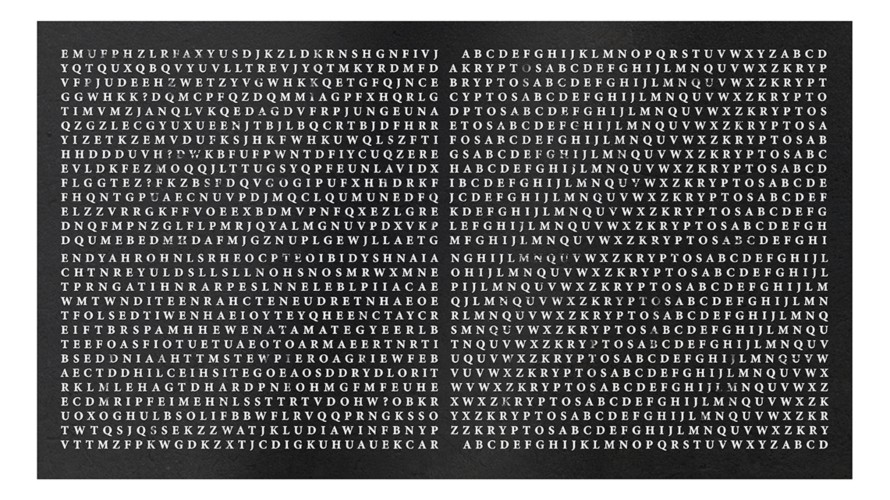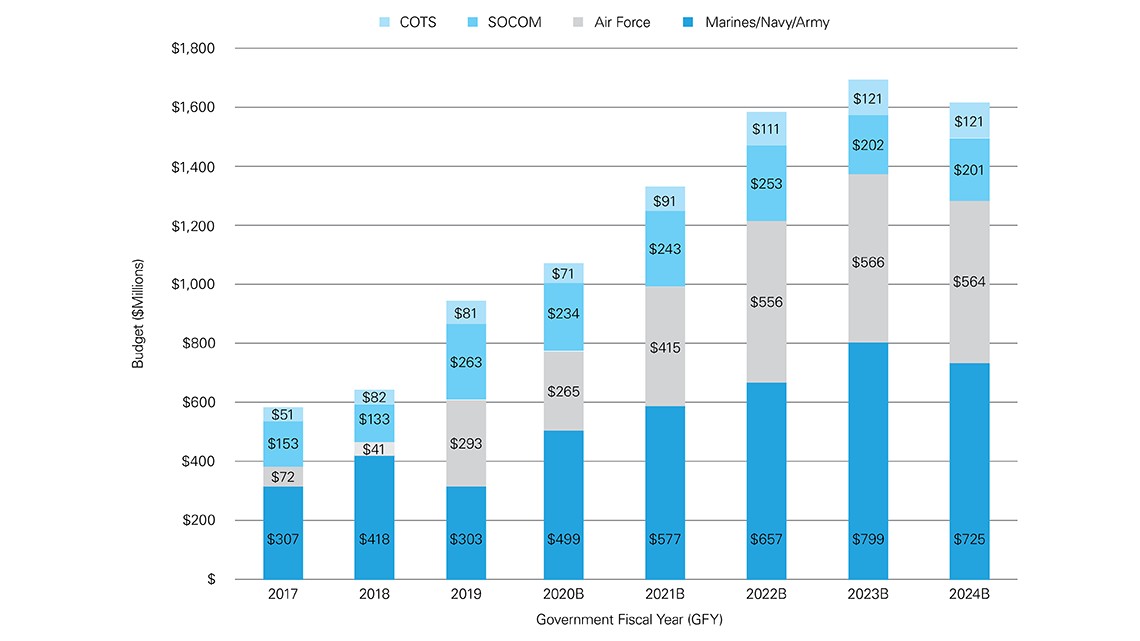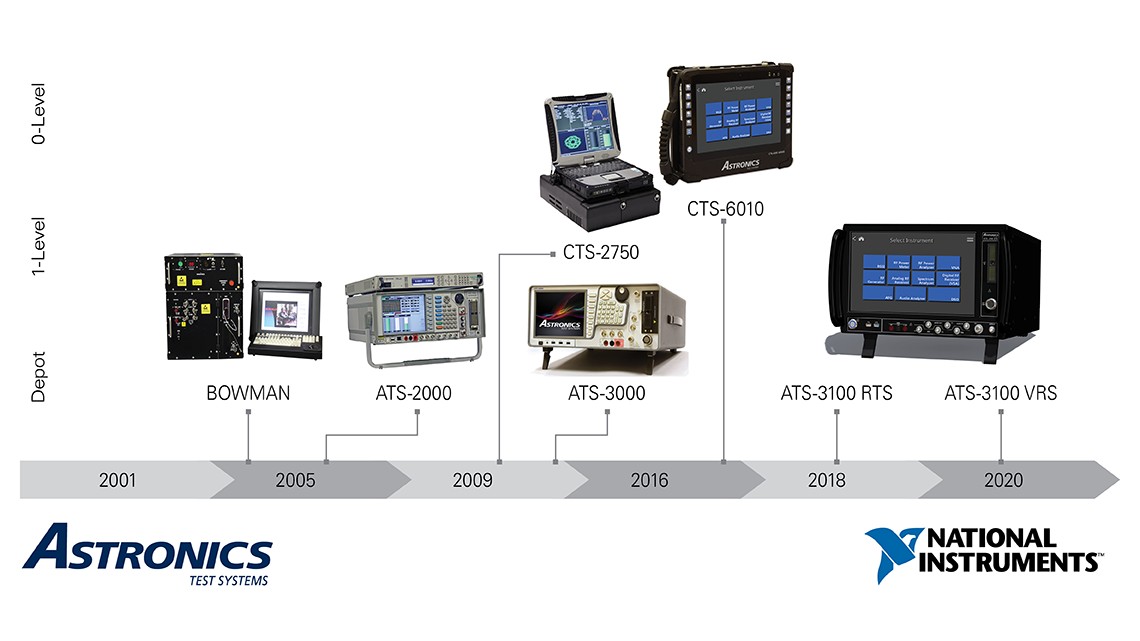Envisioning the Future of Tactical Radio Field Test
Overview
Organizations that deploy tactical radios are facing multiple challenges today: reliable testing of the radios and networks in the field, maintaining mixed generations of radios throughout a fleet, and meeting the maintenance needs of emerging multi-waveform and electronic-warfare-resilient tactical radio technologies. Astronics Test Systems and NI have brought their respective strengths together to deliver test systems that meet these challenges with support for virtually all SINCGARS, airborne with multi-waveform, and modern software-defined tactical radios built on an industry-standard, COTS, modular instrumentation platform.
Contents
- Tactical Radio Field Test: Present and Future
- SINCGARS: Preserving the Legacy
- Maintenance: Critical, Complex, and (Potentially) Costly
- Field-Test Solutions from Astronics Test Systems and NI
- Meet the Needs of Your Entire Modern Tactical Radio Field Test with the ATS-3100 VRS
- Conclusion
Tactical Radio Field Test: Present and Future
A strange object sits on the grounds of the Central Intelligence Agency headquarters in Langley, Virginia. Roughly 12 ft tall and 20 ft long, this large structure made of four copper plates looks almost like a billowing flag. Out of those plates, close to 2,000 individual letters have been cut—seemingly at random. But there's nothing random about it. Those nonsensical strings of letters contain one of the most famous unsolved codes in the world.
Figure 1. Secure communication isn’t only the foundation of tactical radios. It’s also entered pop culture, as shown by Jim Sanborn’s Kryptos sculpture in front of the CIA building in Langley, Virginia.
This enigmatic structure is actually a work of art called Kryptos. Created by the artist Jim Sanborn and installed in 1990, the sculpture’s four panels contain messages. The messages on three of the panels have been deciphered since the Kryptos installation, but the fourth panel’s messages remain uncracked. For hundreds of professional and amateur cryptographers across the globe, decrypting this final piece of text and solving Kryptos' mystery once and for all have become an obsession. It was designed to be difficult, and that's exactly why they keep trying.
Kryptos might be an inanimate object, yet it speaks volumes. As a kind of puzzle for the public, it's a testament to the human ingenuity that goes into creating and cracking complex encryption schemes. And despite the deliberate challenges it presents, Kryptos highlights our fundamental desire to communicate. At its core is a message that's ultimately designed to be received by another party.
As Kryptos has shown us, for every concealed message, there’s always someone working hard to crack it. This is especially true on the battlefield, where communication is vital. A breakdown in communication between soldiers and their peers or superiors puts lives and national security at risk.
Since the 1980s, tactical radios for the US military and its allied forces have used a communication technology system called SINCGARS, short for Single-Channel Ground and Airborne Radio System. SINCGARS replaced the single-frequency radios of the Vietnam era and uses advanced frequency-hopping techniques to achieve a rate of 111 hops per second.
Today, even more reliable, more secure technologies are replacing SINCGARS. Emerging technologies and waveforms such as TrellisWare's TSM-X are promoting large-scale changes in the tactical radio ecosystem. This is creating a need for new architectures like software defined radio (SDR) that can accommodate multiple waveform variables including frequency, bandwidth, modulation, and encryption using one platform. That’s key to both ground and airborne applications.
Figure 2. The US Department of Defense (DoD), per the latest White House budget request, is allocating more than $7 billion over the next five years (2020–24) to support secure communication modernization efforts across multiple branches of the armed services.
Much of this evolution and growth are driven by the US Army and Marines, two branches of the military that are actively modernizing their tactical radio platforms to streamline, harden, and enhance their field communications. One of these modernization initiatives is the Special Operations Forces (SOF) Tactical Communications program, or STC, which integrates anti-spoofing and GPS modules. Other examples are the zero-infrastructure Army Rifleman Radio and Army HMS Manpack system. Among other technologies, these innovative devices removed the traditional dependency on a fixed infrastructure, such as cell towers, or line-of-sight communications.
These advances clearly have implications for established equipment suppliers like L3Harris Technologies (formerly Harris Corporation and L3 Technologies), Northrop Grumman Corporation, Raytheon Company, General Dynamics Corporation, and the Thales Group. In the United States, the tactical radio market is expected to grow to an estimated $1.3 billion in 2023. That will be up from $700 million in 2018. Globally, the trends are expected to be similar. In 2017, the international defense tactical radio market was $8.92 billion. Current projections suggest it will grow to almost $15 billion by 2023.
SINCGARS: Preserving the Legacy
Even as this shift to newer technologies gains momentum, most tactical radios will continue to use SINCGARS for the foreseeable future. This reality means that cutting-edge devices incorporating SDR architectures will need to be backward compatible with SINCGARS waveforms.
The same goes for emerging dual- and multi-channel tactical radios like the AN/PRC-158 and AN/PRC-163. The next-generation Link-16 architecture, which has grown more portable and versatile, helps ground forces share precise target data, positioning, and other crucial information directly to an aircrew's computer from their smartphones or tablets in real time. In the near future, secure communications will become even more advanced as cognitive radios thwart electronic warfare by dynamically adapting to waveforms across a wide spectrum.

Figure 3. These are the broad tactical radio technology trends for past, present, and future generations, including today’s library of more than 50 secure waveforms.
Advances like these are already revolutionizing battlefield communication in incredible ways. Yet, due to cost (each tactical radio runs $25,000 on average) and practicality, devices that leverage innovative networks and protocols can't completely abandon legacy SINCGARS technology anytime soon.
Designing and manufacturing this modern tactical radio equipment are only part of the challenge; maintaining these mission-critical devices over the long term is also imperative. To ensure the highest level of reliability and efficiency, testing and maintenance strategies have to evolve accordingly. If one tactical radio is expected to support many waveforms, it follows that a single testing platform should be able to subject that device to many different tests.
Furthermore, that testing shouldn't be limited to current and legacy communication protocols. It should also be open to future protocols that have yet to emerge.
Maintenance: Critical, Complex, and (Potentially) Costly
In military applications, testing and maintenance procedures are more important and complex than in other applications. The process of inspecting equipment has zero room for error. But preliminary diagnoses often must be made using the limited resources available in the field, and more comprehensive testing and repair typically must be conducted at the depot. These restrictions raise quite a few logistical hurdles. Having to go one step further and return the units to the supplier through an RMA process is an unnecessarily time-consuming and expensive option, especially when troops are deployed in remote areas or overseas.
The situation grows more costly when the test assessment produces a "no fault found" (NFF) or "cannot duplicate" (CND) result, and the device is returned to the field as a "known good radio," or KGR.
Some suppliers are understandably happy with this expense, given that the average cost of repair per tactical radio is $5,000, even in NFF and CND cases. Yet it highlights a much more fundamental question: How can the armed forces test rapidly evolving tactical radios with the necessary precision while retaining logistical efficiency around the world? Beyond that, how can military leaders be sure the devices, waveforms, and data will be handled securely along every step of the maintenance supply chain?
The solution lies in automated, modular testing solutions that are situated closer to the field.
Automation is key because it minimizes human intervention and establishes the repeatability of test results. By ensuring that the right specifications are applied to the right radio in every instance, regardless of the operator’s skill, depot-level technicians and engineers—and ultimately the soldier in the field—can be more confident that the equipment is reliable. Automation also streamlines maintenance activities into two clear stages: (1) pass and return to mission readiness or (2) fail and troubleshooting.
As the only way to manage obsolescence and safeguard long-term return on investment (ROI), modularity is equally important. A modular system architecture is defined by two components: software and hardware. This keeps user interactions distinct from actual test execution. The test program set (TPS) remains the same, so the test sequence can be standardized according to the radio supplier, radio type, and waveform. Meanwhile, the test hardware outside of the TPS changes to accommodate new applications and evolving use cases while maintaining legacy compatibility.
The final piece is mobility. Specifically, this automated, modular, turnkey testing solution must be deployable both in the depot and as close to the field as possible to create logistical efficiency and increased self-sufficiency. If field-testing equipment can capture NFF and CND results before a lengthy and expensive RMA is initiated, it can streamline operations and ensure tactical radio uptime. Those benefits justify the initial investment while generating ROI over the long term.
Field-Test Solutions from Astronics Test Systems and NI
The future of tactical radio field test is best illustrated by the efforts of two companies: Astronics Test Systems and NI. Each has its respective strength in this area, and their combined expertise has resulted in a hardware test platform identified by customers as “the market-leading platform for tactical radio field test.”
Astronics has provided cutting-edge, cost-effective test solutions to the defense industry for decades. In that industry and beyond, the company has consistently demonstrated leadership in radio test, particularly in developing vendor-approved TPSs and in maintaining the largest available TPS library, which, as discussed previously, increases the versatility and applicability of test hardware.
Astronics hardware solutions naturally take advantage of these unique TPS assets. The ATS-3100 RTS, a fourth-generation turnkey testing platform for tactical radio field test, is optimized for SINCGARS, making it a practical and economical choice for current-gen tactical radio fleets.
Figure 4. Astronics has four generations of tactical radio field test solutions. The fifth will leverage a new partnership with NI to incorporate NI vector signal transceiver capabilities and address emerging SDR technology trends and challenges.
For its part, NI has shown ongoing market leadership in open modular instrument platforms. This innovation includes the PXI Vector Signal Transceiver, or VST, which is a key component in testing a variety of radio frequency (RF) and wireless signals. NI's VST was the first in the world to combine several advanced RF testing components and interface in a single module. When paired with the right test platform, the VST can help the armed forces test more modern RF architectures like SDR.
The Astronics ATS-3100 VRS fuses these respective strengths. It's a fifth-generation evolution of the proven ATS-3100 platform that integrates the leading-edge VST from NI. The next generation opens up a new, future-oriented performance tier for tactical radio field test that complements the baseline SINCGARS configuration while enabling an upgrade path for SDR waveforms (for example, Link-16). It's truly the best of both worlds: fully future-proof while remaining backward compatible.
Meet the Needs of Your Entire Modern Tactical Radio Field Test with the ATS-3100 VRS
The ATS-3100 VRS has the potential to meet all the demands of a highly mobile, technologically advanced, and cost-optimized modern military.
Technicians in the depot will use the automation of the ATS-3100 VRS to run a comprehensive suite of tests based on an extensive TPS library and modular physical interfaces. Whether the radio is legacy SINCGARS or one that incorporates emerging dual- and multi-channel technologies, the benchtop ATS-3100 VRS will provide a consolidated turnkey test platform. Overall, it will streamline maintenance activities, improve repeatability, and vastly simplify complex test procedures.
Figure 5. The future of tactical radio field test will encompass both depot and true field test to maintain tactical radios and the networks they serve.
Fundamentally, regardless of whether the radio is an airborne or ground variant, the ATS-3100 platform will be able to determine NFF or CND results with confidence prior to the expensive RMA process. This means that the depot, not the supplier, becomes the last stop in the repair chain. The depot will be the main driver of the future of field test.
Closer to the front lines, the potential of the field test strategy opens up: an NFF or a CND result means the problem is outside the tactical radio. These problems usually involve cables, connectors, power amplifiers, antennas, environmental contamination, and even possible interference. A compact battery-operated variant of the CTS-6000 platform will create incredible portability to pursue these kinds of problems economically by delivering test to the radio rather than the other way around.
This portability combined with the power of supplier-certified TPS will allow field technicians to conduct on-site limited technical inspections (LTI) for tactical radios by L3Harris, Raytheon, Thales, General Dynamics, Collins Aerospace, TrellisWare, and others. It will also accommodate the networks they serve for a more holistic field-test solution that consists of portable and bench instrumentation augmented by TPS compatibility.
KGRs—even when dealing with complex SDR-based devices from different suppliers—can thus be identified with confidence and returned to service on the spot. For more elusive faults, soldiers can begin troubleshooting the defective radio and its network immediately using the portable version of the Astronics platform, enabling a mission-oriented evolution in thinking from the uptime of individual radios to the uptime of the overall network. Troubleshooting and fault isolation will no longer be a protracted, resource-intensive process like trying to solve the riddle of Kryptos.
Conclusion
It could be several more years, perhaps decades, before the message that Kryptos holds is finally unlocked. But the answer to the puzzle posed by the future of tactical radio field test is already starting to take shape.
At the core of the successful test strategy will be the benchtop Astronics ATS-3100 platform in the depot. Out in the field, the handheld test hardware based on the CTS-6000 platform will support mobility while providing troubleshooting tools for the entire network. The combination of these two elements allows for a holistic, forward-looking approach to tactical radio field test—one that better accounts for legacy devices.
For existing fleets of SINCGARS radios, the Astronics ATS-3100 RTS offers an affordable yet flexible test solution. It addresses current requirements in a reliable, targeted, and cost-effective way.
The new ATS-3100 VRS marks a platform evolution and upgrade path for next-gen tactical radios. By leveraging the joint engineering expertise of Astronics and NI to test legacy SINCGARS devices alongside emerging waveforms, the US military and its allies can manage obsolescence much more effectively.
Just as importantly, both the ATS-3100 RTS and VRS allow troops to adhere to best practices in terms of security, safety, mission readiness, and logistics in the depot and the field.
Finally, the CTS-6000 handheld platform completes this comprehensive testing constellation. It offers portable, on-location troubleshooting in the field for not only the tactical radio but also the entire network.
This uncompromising end-to-end solution is more than just ahead of its time; it serves the past, present, and future needs of tactical radio field test.




